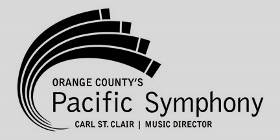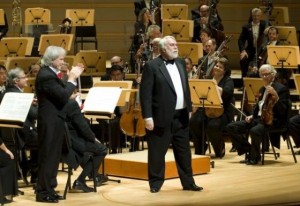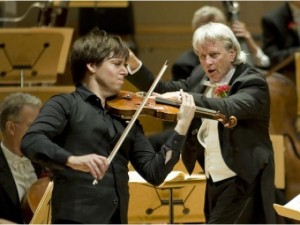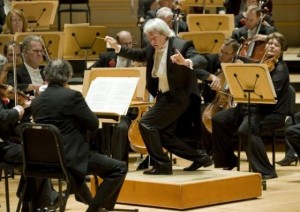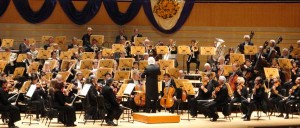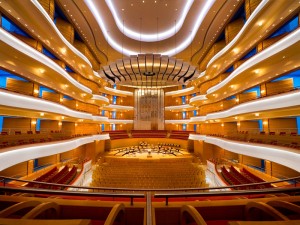A DAZZLING EXPERIENCE
Sound the bells, for Pacific Symphony’s 36th season opener with Joshua Bell was a resounding success. There was much ado about Music Director Carl St.Clair beginning his 25th-anniversary season, including a short documentary film about the man from rustic Hochheim, Texas who went on to become the assistant 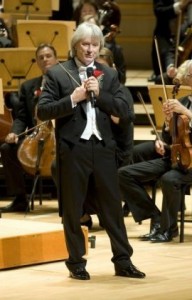 conductor of the Boston Symphony under John Williams (indeed, it was Williams who introduced St.Clair to the then-budding Orange County outfit). St.Clair is a modest fellow, almost genteel, and I suspected that all of the brouhaha surrounding his silver jubilee was not his suggestion.
conductor of the Boston Symphony under John Williams (indeed, it was Williams who introduced St.Clair to the then-budding Orange County outfit). St.Clair is a modest fellow, almost genteel, and I suspected that all of the brouhaha surrounding his silver jubilee was not his suggestion.
St.Clair is also gracious, and it was apparent as I floated out of the Segerstrom Concert Hall that the program of showpieces and easy-to-swallow selections was his way of thanking a core audience who’”let’s face it’”probably don’t attend the symphony for minimalism or somesuch experimental compositions. Although the pieces were chosen not as they relate to each other but as representational facets of St.Clair’s career, it didn’t matter a bit. The Symphony players were a marvel, the acoustics extraordinary, and the five pieces both rousing and soothing’”a combination most pleasing.
The evening began with a nod to Williams, with his short 1993 fanfare, Sound the Bells!, which may be familiar to Williams fans who own his American Journey’”Winter Olympics 2002 album. Inspired by the enormous temple bells of Japan, the piece was composed in honor of the wedding of Crown Prince Naruhito and Crown Princess Masako Owada. The trademark Williams sound can be found in the rousing 4/4 tempo, the bright, chordal harmonies and filmic use of percussion, brass, and strings. It was loud enough to be heard at Disneyland, but a little rafter-shaking was necessary after the far-too-familiar-to-be-inspiring “Star-Spangles Banner.”
The west coast premiere of Christopher Rouse’s Supplica (co-commissioned by Pacific Symphony with the Pittsburgh Symphony Orchestra) was fascinatingly both enigmatic and touching. About three minutes longer than Samuel Barber’s eight-minute Adagio for Strings’”which came to mind during lush and pleasingly discordant string passages’”Rouse calls for a downsized orchestra without woodwinds. Elegiac, meditative, and bittersweet, a plucked harp introduces an ominous softness that eventually builds a grieving brass. The mystery comes when this principally lyrical work would suddenly jolt us with eruptions of dissonance. I loved how the piece slowly fades to stillness, so the listener can interpret either silent anguish or peaceful acceptance. Mr. Rouse was on hand for a well-deserved curtain call.
Written in 1904, Alexander Glazunov’s only violin concerto (in A minor, Op. 82) is shadowy, beautiful, and unquestionably Russian in sound. Somehow, it has not received the same worldwide acclaim in recent years as some of its contemporaries (including the 1903 Sibelius), but it is truly a beautiful, romantic gem of the violin literature that deserves to be better-known. Its rhapsodic bursts of melody, sensuous harmonies, and technical fireworks are particularly challenging, but in the hands of a virtuoso performer such as Joshua Bell, a most rewarding work. With his rich tone, dazzling dexterity, and expansive but sensitive phrasing, Bell, relishing the piece’s country gypsy flavor by stomping his foot a few times, was offered a sympathetic and detailed accompaniment from the orchestra.
While I was hoping for a solo encore, there was already one set in place with the orchestra, a piece which Bell has played often (including his recent stint at the Hollywood Bowl): Nigel Hess’s Main Theme from the motion picture Ladies in Lavender. Given the exquisite, heart-tugging melody, Bell’s violin sang, danced, and cried, bringing us along for the ride.
Richard Strauss’s groundbreaking opera Salomé included “Dance of the Seven Veils,” essentially a strip tease of tantalizing music that undulates and slithers wherein the sensual and powerful Salomé peels off clothing until finally she’s left with none. Gloriously lurid and decadent, this rendition wasn’t what one would call nuanced. St.Clair was as impassioned as the feverish Salomé, so even the languid Oriental flavors and slow waltzes were given as much strength as the climactic build. But the ecdysial dance was all in my face, and I loved it.
Closing the satisfying program was Suite No. 2 from Ravel’s Daphnis and Chloé, a ballet which had listeners scratching their heads at its 1912 premiere’”they were still becoming accustomed to this new form of impressionistic music that seemed to be devoid of a beat. Yet Daphnis and Chloé became one of the most enduring hits of the twentieth century, and remains a dazzling experience today. Soon after the ballet’s premiere, Ravel published two concert suites derived from the original score; far more frequently performed (and a St.Clair signature) is Suite No. 2, a symphonic fragment taken from the Third Scene of the ballet (consisting of “Daybreak,” “Pantomime,” and “Danse generale”).
Ravel described his score as “a choreographic symphony” in which his “intention was to compose a vast musical fresco, less scrupulous as to archaism than faithful to the Greece of my dreams, which inclined readily enough to what French artists of the late 18th century have imagined and depicted.” As with a lapidist who cuts, polishes, and engraves precious stones, Ravel created sparklingly brilliant orchestrations, kaleidoscopic enough to showcase Pacific Symphony’s principal players: Benjamin Smolen on flute, Jessica Pearlman on oboe, Mindy Ball on harp, Rose Corrigan on bassoon, and Benjamin Lulich on clarinet.
Indeed, the most stunning work all night came from the players, which is as it should be. I certainly hope Orange County appreciates the mastery of the musicians in the Pacific Symphony–and how lucky we are to see them in one of the most beautiful halls in America.
production photos by Nick Koon
Pacific Symphony
36th season opener with Joshua Bell
Renée and Henry Segerstrom Concert Hall
ended on September 28, 2014
for tickets, call (714) 755-5799 or visit www.PacificSymphony.org
